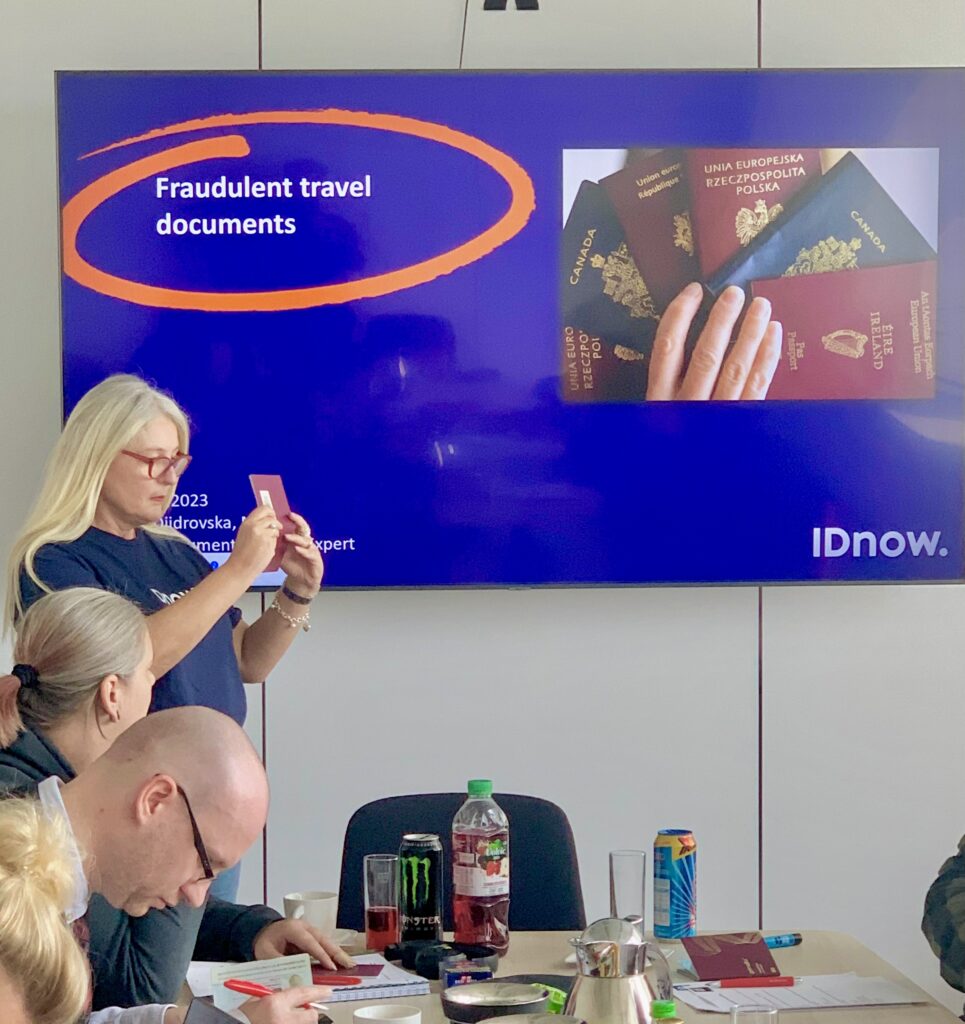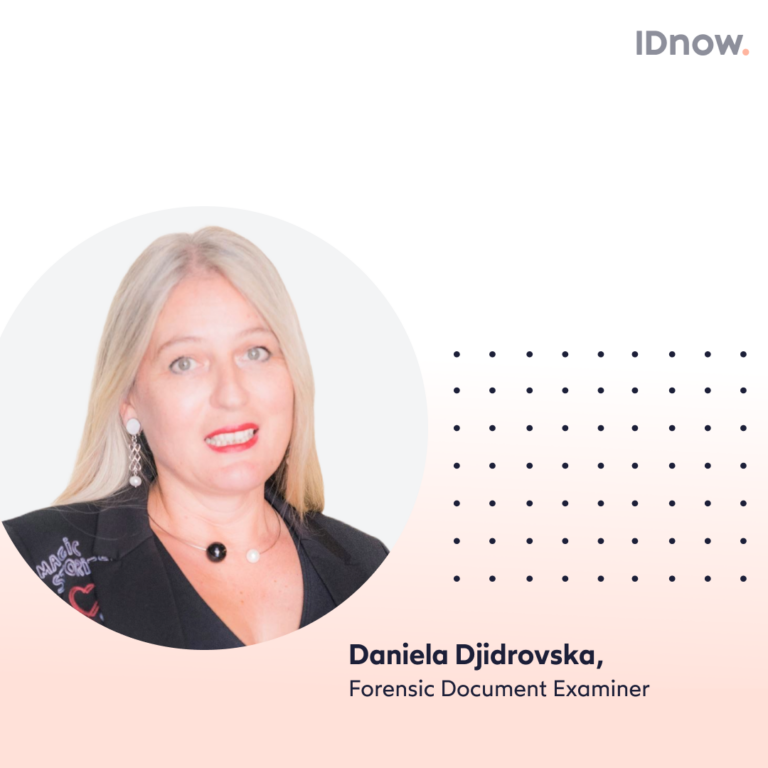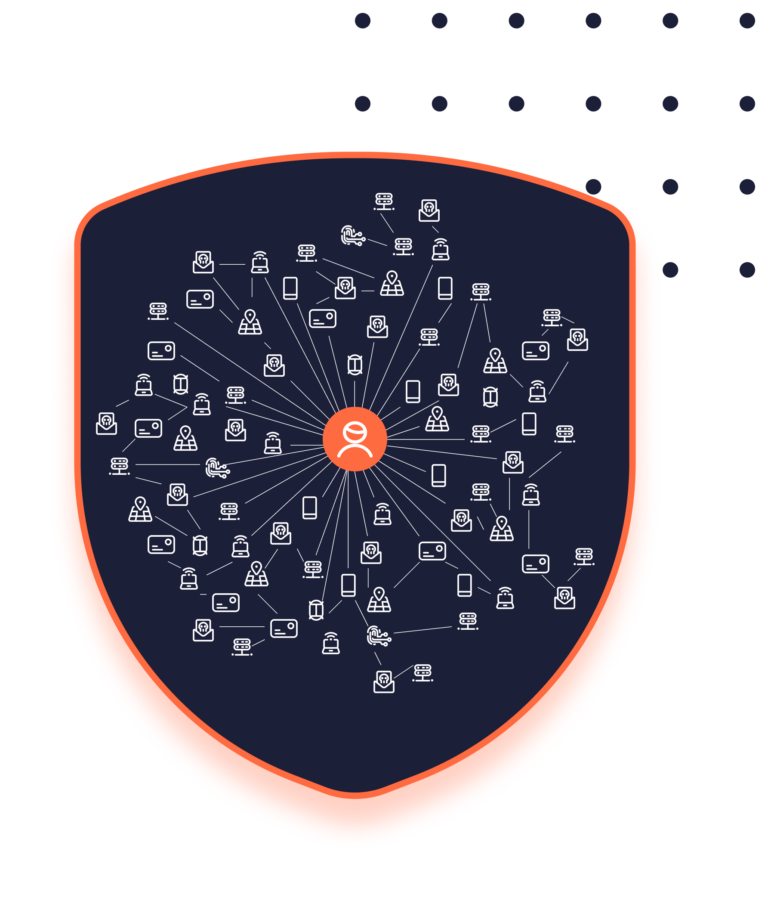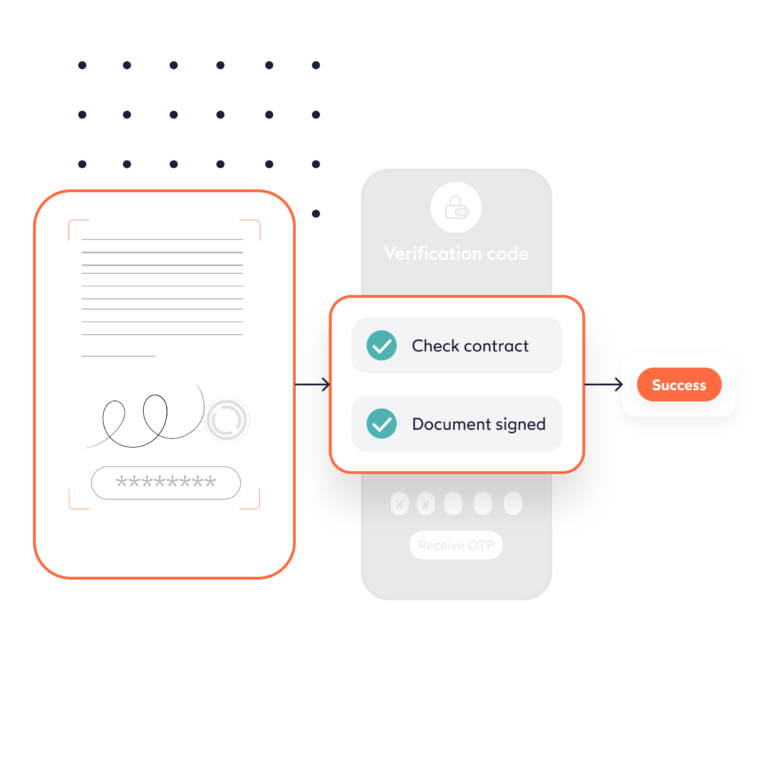Early detection of document fraud is key to prevent serious and irreparable business damage. Thankfully, we run regular training sessions to ensure our customers are kept up to date with the latest fraud terms and techniques.
At IDnow, we take the risks posed by document fraud very seriously. The use of forged and fraudulent documents can massively disrupt operations, leading to reputational harm, loss of customer trust and ultimately cost a business millions in damages.
This is why our Security Document Examination and Fraud Detection training program, developed in cooperation with multiple law enforcement agencies, from INTERPOL to the Macedonian police, equips our customers with the tools, knowledge, skills and confidence to detect and respond to document fraud effectively.
After all, if there’s one thing that our diverse customer base shares it’s a common interest in enhancing their capabilities to examine and detect fraudulent documents.
How we help detect the most common forms of document fraud.
Document verification and authentication are crucial to ensure that submitted documents are a) genuine and b) presented by the rightful holder. However, with thousands of different identity and travel documents in existence, it can be a significant challenge to differentiate between false and genuine documents.
There are four commonly accepted forms of fraudulent documents: counterfeit, forgery, fraudulently used or obtained travel documents and fantasy or camouflage documents. Here, we share how we train our customers to detect each one.
- Counterfeit documents.
A counterfeit document is an illegally produced document, such as a passport, that is created to deceive or mislead. This type of document is neither legitimately manufactured nor legitimately issued by the recognized authority. Synthetic documents are also considered counterfeit documents. Counterfeiting is illegal and often associated with criminal activities, such as identity theft, fraud and illegal immigration.
We train our customers to detect counterfeit documents by examining security features (watermarks, holograms and microprinting) under different light sources like UV lights and using specialized tools, such as magnifiers to check paper quality and texture for printing inconsistencies.
2. Forged documents.
Forgery is a fraudulent alteration of any part of a genuine document. Alterations are only made to certain elements, such as substituting photographs on the bio-page or altering variable data (e.g. name, date of birth, document number). Tampering may include the removal or addition of information.
Forgeries can be detected by looking out for signs of tampering, including disturbed paper fibres or irregular lamination. Other tell-tale signs include inconsistent printing, such as mismatched fonts or disrupted patterns. Of course, the most obvious thing that we train our customers to be on the lookout for are data discrepancies, and photo signature irregularities. The use of UV lights and microscopes are essential, as these can reveal chemical treatments and differences in printing and personalization techniques that are otherwise invisible to the naked eye.
3. Fraudulently used or obtained genuine documents.
Of course, genuine documents can also be obtained fraudulently by using someone else’s personal information to apply for documents or providing false information on applications.
The use of a genuine identity document by another person is identity theft. Here, an impostor uses the stolen, found or given identity document of another person without authorization pretending to be that person (also referred to similarity fraud) with the intent to commit crimes in that other person’s name. A person who uses a mask (synthetic mask attack) also falls under the category of identity theft.
Facial morphing refers to the synthesis of two facial images from different individuals. Morphing can fully transform one face into another but when the process is stopped midway, a morph image with a non-existent person, who resembles both people at the same time, will be created. As a result, multiple individuals can use the same document. There is a substantial risk of receiving a morph image when an individual’s photo is submitted to the issuance authority while applying for an ID document, instead of the photo being taken on-site. In this case, the obtained document itself is authentic and genuine, and it is extremely difficult to detect this kind of identity fraud.
We train attendees to express caution when examining documents because even if secure identification documents are genuine, they might have been obtained illegally. For example, criminals often change their name through a legal process and then apply for a new secure identity document to evade detection by law enforcement to cross borders and open bank accounts.
4. Fantasy and camouflage documents.
A fantasy document refers to any security document, such as a passport, issued by a non-recognized state, whereas camouflage document can be a document issued in the name of a country that no longer exists.
Fantasy documents mask the real identity or nationality of the holder and often bear the names of non-existent or historical nations, or fictitious issuing authorities.
Detecting these documents involves searching for inconsistent components from different document sources. We train how to verify security features against genuine reference specimens and validate document numbers with issuing authorities.

A collaborative approach.
Since 2023, IDnow has been delivering Security Document Examination and Fraud Detection training. Our sessions are interactive, practical and adaptable to different industries. They feature multiple modules and practical exercises to hone document examination and fraud detection skills. In doing so, we help strengthen the document verification capabilities of our customers, enabling them to examine and identify fraudulent documents and other types of fraud, including money laundering, deepfakes and money mules.
Key components include:
- Hands-on analysis of genuine documents
- Tools and technologies used in document production
- Security features verification
- Classification of fraudulent documents
- Scenario-based learning to reinforce decision-making skills and detect fraud
- Up-to-date forgery detection techniques
Whether delivered in-person or virtually, the training is led by experts with backgrounds in fraud investigation, forensic analysis and law enforcement.
As counterfeit travel and ID documents are widely regarded as a major threat to public order, we recommend all our customers to have at least a minimum knowledge and skills for security document examination and fraud detection.
Beyond training: Building a culture of trust and vigilance.
While tools and technology help, it’s people who are always the first line of defence. Our goal is to help organizations build a culture of awareness and responsibility, where every employee understands their role in protecting against fraud.
Document fraud isn’t going away anytime soon — but with the right training and support, organizations can stay a step ahead. We’re proud to work alongside law enforcement and international organizations to empower our clients with the knowledge and strategies they need to safeguard their operations.
As fraudulent documents affect every industry, we deliver training sessions to a wide range of customers from financial services, telcos, gambling platforms and many other industries.
For more information on how we work with our customers to shape the future of identity verification, meet regulatory requirements, and anticipate upcoming technological and industry challenges, check out our blog, ‘A collaborative affair: How IDnow works with its customers to innovate and tackle industry challenges.’
By

Daniela Djidrovska,
Forensic Document Examiner at IDnow
Connect with Daniela on LinkedIn



